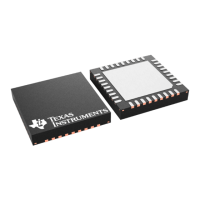bytes that contain CRC status, link quality
indication and RSSI value.
Packet Handling in Firmware
When implementing a packet oriented radio
protocol in firmware, the MCU needs to kno
when a packet has been received/transmitted.
Additionally, for packets longer than 64 bytes
the RX FIFO needs to be read whi
the TX FIFO needs to be refilled while in TX.
This means that the MCU needs to know the
number of bytes that can be r
written to the RX FIFO and TX FIFO
respectively. There are two possible solutions
to get the necessary status information:
a) Interrupt driven solution
In both RX and TX one can use one of the
pins to give an interrupt when a sync word has
been received/transmitted and/or when a
that are associated with the
used as interrupt sources to provide
information on how many bytes are in the RX
FIFO and TX FIFO respectively. See
register can be polled at a
given rate to get information about the current
polled at a given rate to get information about
the number of bytes in the RX FIFO and TX
pectively. Alternatively, the number of
bytes in the RX FIFO and TX FIFO can be
read from the chip status byte returned on the
MISO line each time a header byte, data byte,
or command strobe is sent on the SPI bus.
It is recommended to employ an interrupt
driven solution as high rate SPI polling will
reduce the RX sensitivity. Furthermore, as
is a small, but finite, probability that a single
is being corrupt. The same is the
case when reading the chip status byte.
Refer to the TI website for SW examples
supports amplitude, frequency and
phase shift modulation formats. The desired
modulation format is set in the
Optionally, the data stream can be Manchester
coded by the modulator and decoded by the
demodulator. This option is enabled by setting
encoding is not supported at the same
using the FEC/Interleaver option.
FSK can optionally be shaped by a
Gaussian filter with BT=1, producing a GFSK
The frequency deviation is programmed with
register. The value has an
exponent/mantissa form, and the resultant
The symbol encoding is shown in
, the complete transmission
c word and payload) will be
Phase shifts are performed with a constant
Identical to offset QPSK with half
shaping (data coding may differ)

